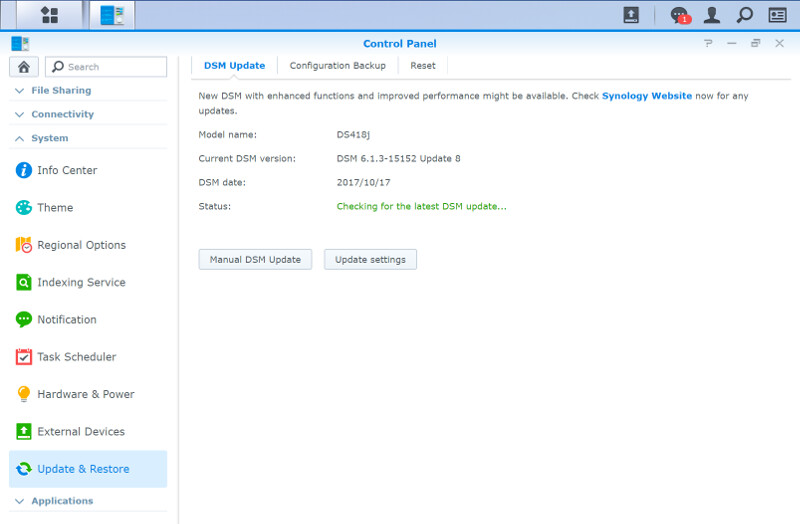Synology DiskStation Manager (DSM) Software Introduction
Bohs Hansen / 7 years ago
NAS Settings – Part 2
For faster page loading, we’ve split up the NAS settings into two pages.
Information and Status
The Info Center has all your NAS’ information in a single place. Everything from thermal state to the installed hardware.
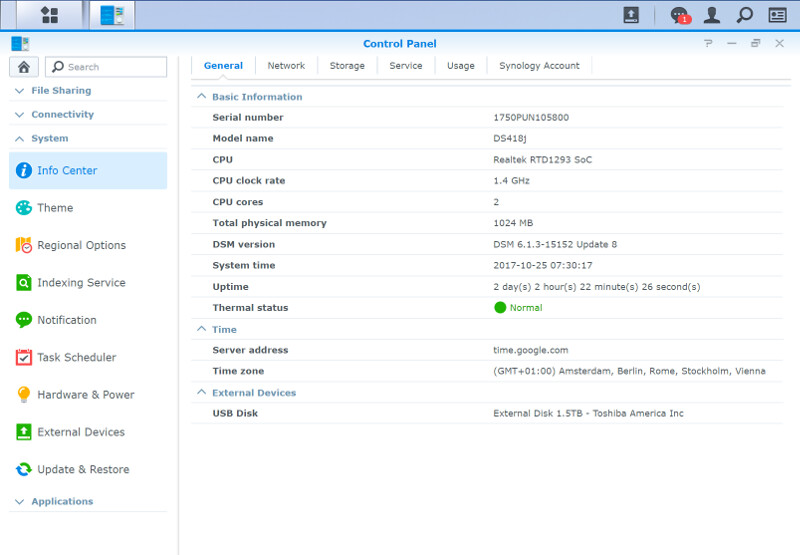
Networking is a big part of a NAS, and as such, it has its own page.
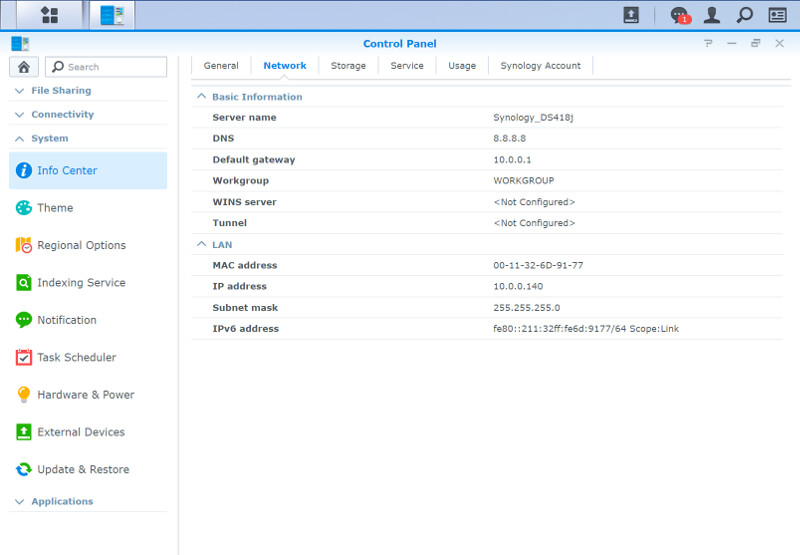
The same goes for the storage, after all, a NAS wouldn’t be much without.
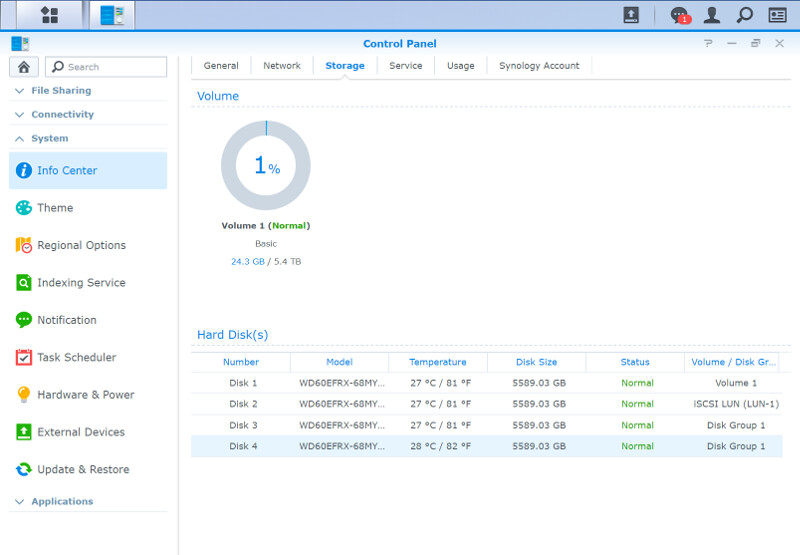
Services and port forwardings can checkup upon as well as changed from within the Info Center. It even has a feature to test the connection to see if you set everything correctly.
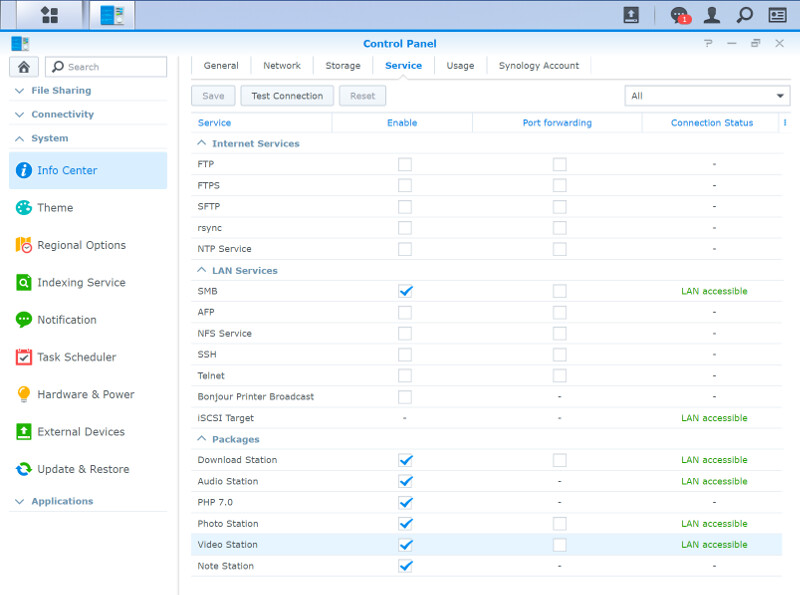
You can also check on your Synology account and define whether you want to share usage-information and the network location.
Regional Options
The regional options contain settings for time and language, as you might have guessed by the name. It comes with NTP support for automatic settings too.
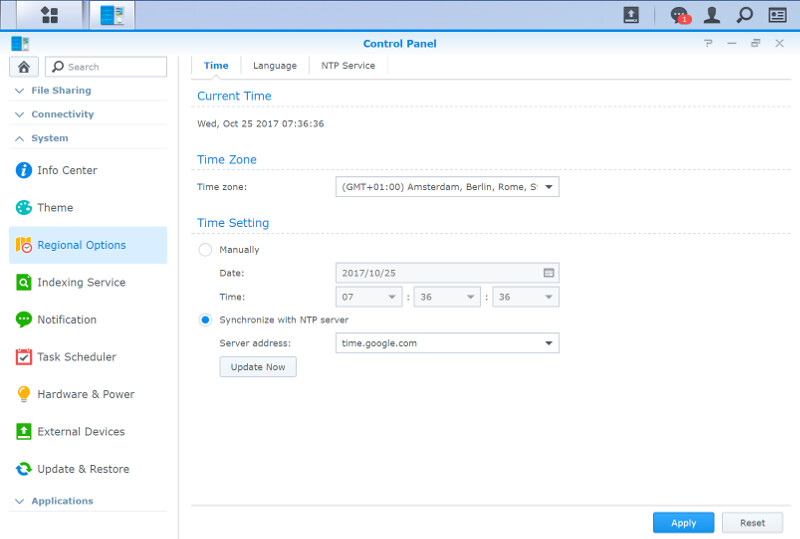
The language and code pages can be changed, and DSM has a long list of supported languages.
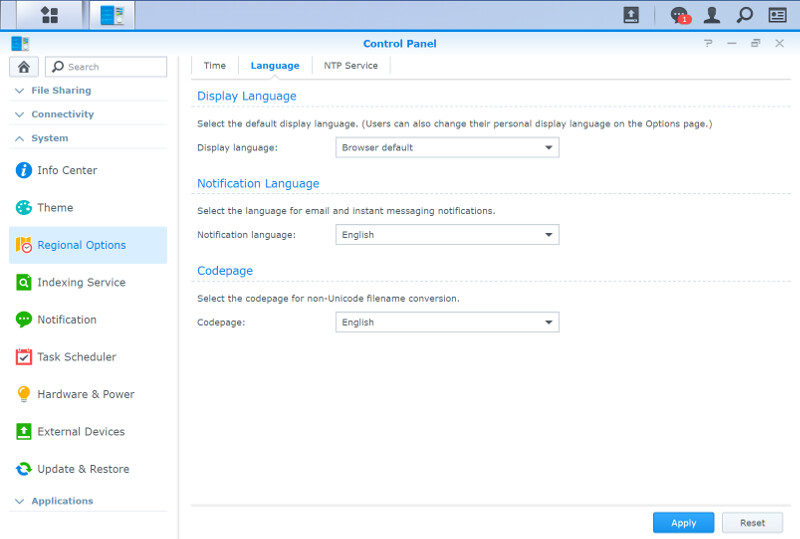
You can also run your own NTP service directly from your Synology NAS by enabling the NTP service.
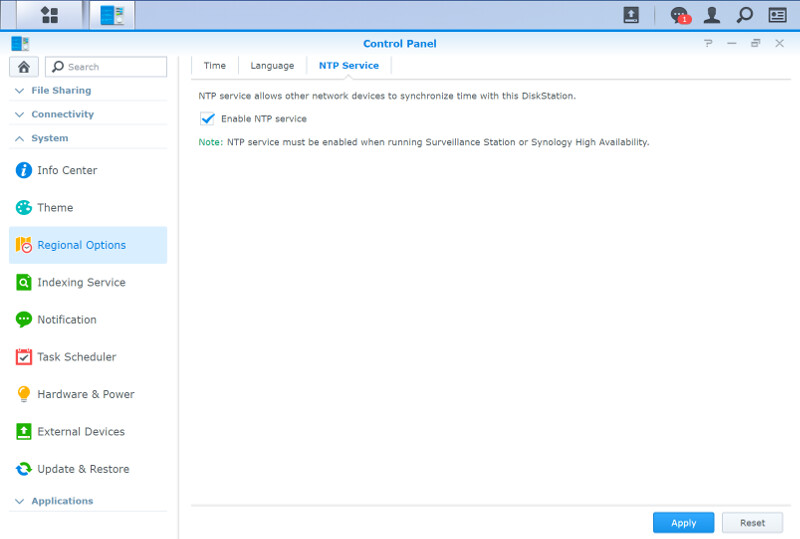
Customisation and Themes
The login style can be customised to match your setup and preferences.
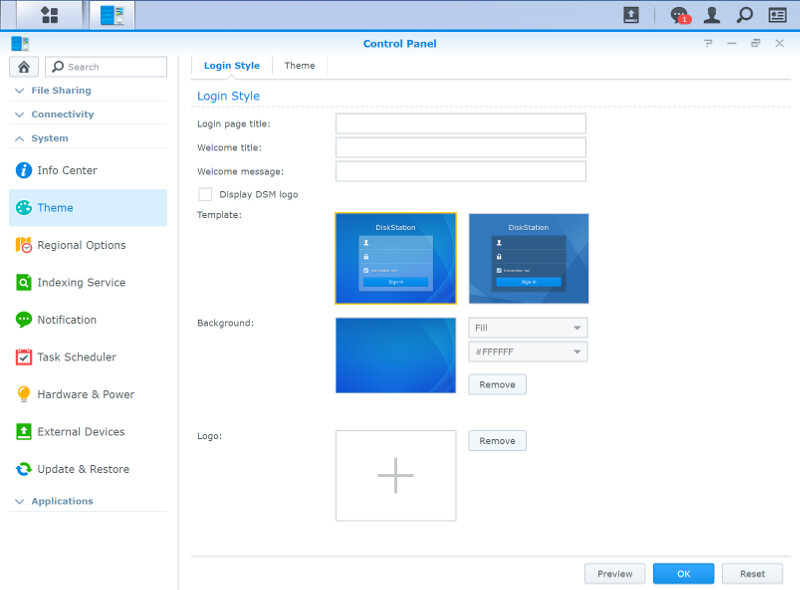
Besides the default light theme, there’s also a darker one available.
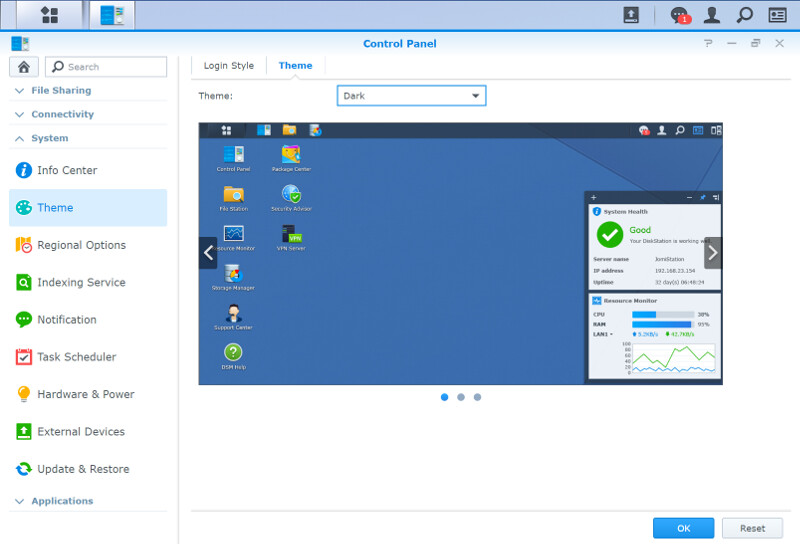
Indexing
The indexing service is quite important, at least if you want to use the media station apps. It lets you define which folders have your media files and thus supporting more features for said apps.
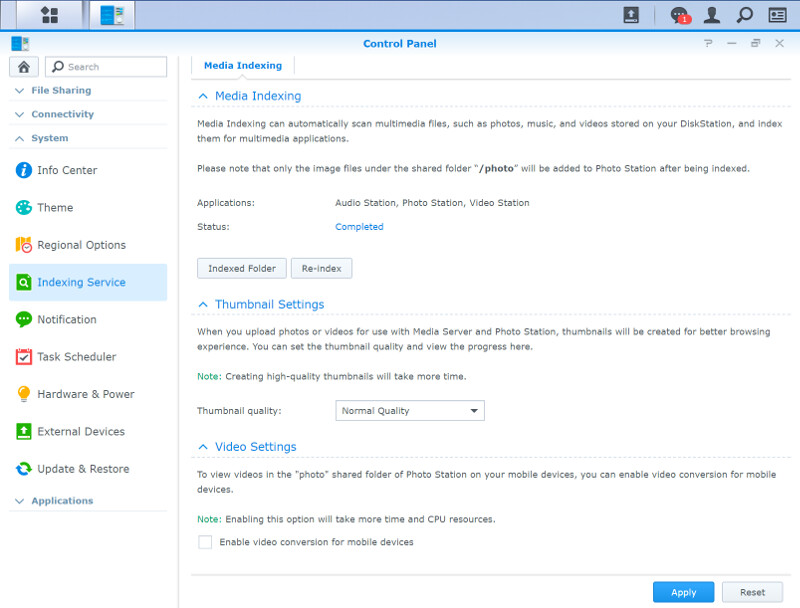
Task Scheduler
The task scheduler’s purpose is given in the name. You can create user-defined scripts, have it act with the recycling bin, perform RAID scrubbing, access the beep-control, or various installed services. You can also have the output results logged to a file for readouts by other tools.
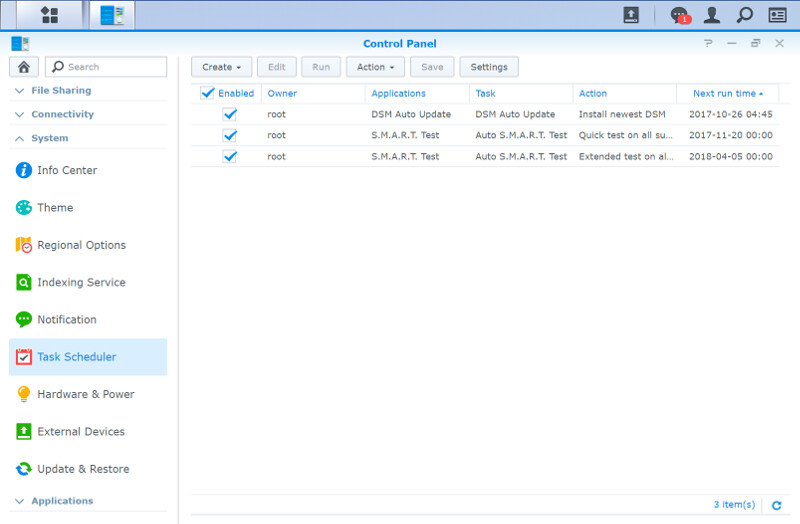
Firmware Management
The last point that I’m showing in this section is probably one of the most important ones. You should always keep your NAS up-to-date. You can do this manually, or you can let it happen at a specified time. New updates bring security enhancements, bug fixes, and new functions, so there isn’t a reason not to upgrade.
